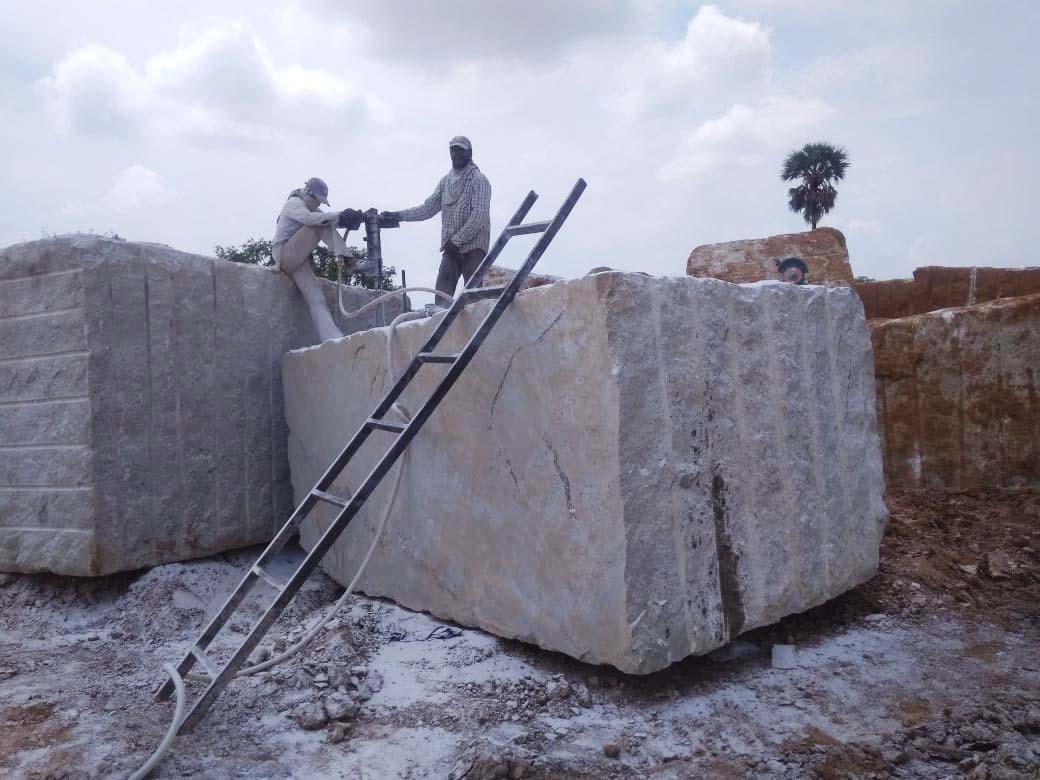Discovering the Rich History and Lasting Practices of Granite Quarrying
As we base on the precipice of revealing the complex tapestry of granite quarrying, a journey with time reveals not just the physical act of drawing out rock but likewise the cultural and historic significance woven right into the really fabric of this practice. From the ancient beginnings that laid the structure for modern quarrying methods to the sustainable techniques that are shaping the future of this market, each carve mark on granite surface areas narrates waiting to be discovered (granite quarries in south africa). The tradition of granite quarrying extends far beyond simple extraction; it is a testament to human resourcefulness, durability, and the long-lasting attraction of this impressive rock
Old Origins of Granite Quarrying
Dating back to old human beings, the practice of quarrying granite has been an indispensable component of human history and building improvement. The earliest proof of granite quarrying days back to old Egypt, where huge pyramids and complex sculptures were crafted from this sturdy stone. The Egyptians used primitive devices to draw out granite blocks from quarries, showcasing the relevance of this product in their significant building and constructions.
Progressing in history, the Greeks also made significant contributions to the quarrying of granite. The Greeks made use of granite in numerous building wonders, such as holy places and sculptures, showing their skill in shaping and carving this durable rock. The Romans further refined the strategies of quarrying granite, utilizing innovative devices like blades and hammers to essence and shape granite for their legendary frameworks.
Through the centuries, the method of quarrying granite has developed, with contemporary technologies improving performance while keeping the ageless charm of this natural stone - granite quarries in south africa. From ancient civilizations to modern home builders, the tradition of granite quarrying proceeds to form our globe
Development of Quarrying Methods
The evolution of quarrying methods has actually been marked by a continuous progression in the direction of better effectiveness and precision in drawing out granite. Early quarrying strategies involved hands-on labor with fundamental tools such as knives, hammers, and wedges to draw out granite blocks from the planet.
Innovations in computer-controlled tools and 3D modeling have actually maximized quarrying operations, leading to minimal ecological influence and enhanced sustainability techniques. As the need for granite proceeds to increase, the development of quarrying methods remains important to conference market needs efficiently and sustainably.
Cultural Relevance of Granite
Granite holds an extensive social relevance throughout different worlds due to its enduring visibility in building work of arts and respected monuments. From the marvelous pyramids of Egypt to the complex makings of the Angkor Wat temple in Cambodia, granite has been a product of selection for revealing grandeur and long life in social heritage. In ancient Rome, granite columns adorned holy places and public structures, signifying stamina and permanence. The cultural value of granite prolongs beyond its physical qualities; it embodies durability, stability, and timelessness, making it an icon of sustaining traditions and traditions.

Sustainable Practices in Quarrying
In the middle of the rich history of granite quarrying and its social value lies a growing focus on sustainable practices within the sector. As ecological awareness and problems concerning resource depletion have actually increased worldwide, the quarrying industry has increasingly welcomed sustainable approaches to lessen its influence on the environment and bordering neighborhoods.

Additionally, improvement and recovery of quarry websites post-extraction are integral to sustainable practices. By restoring quarried areas to a natural or useful state, such as developing wild animals environments or entertainment areas, quarriers can balance out the environmental footprint of their operations and contribute positively to the local ecosystem.
Legacy of Granite Quarrying
With a historic background soaked in workmanship and commercial development, what enduring impact has granite quarrying left on the landscape of modern culture? The heritage of granite quarrying goes beyond plain extraction techniques; it has actually formed building marvels, city landscapes, and cultural heritage worldwide. The resilient nature of granite has actually made it a favored option for monuments, structures, and infrastructure, standing as a testament to the skill and artistry of quarry workers throughout generations.
Moreover, the economic footprint of granite quarrying can not be overlooked. The sector continues to offer employment possibility and drive local economic situations in areas where granite extraction prevails. It has likewise spurred technological advancements in quarrying methods and tools, leading to more effective and sustainable practices.
In regards to sustainability, the tradition of granite Going Here quarrying includes efforts to minimize environmental influences with recovery tasks and liable resource administration. By stabilizing economic interests with environmental stewardship, the industry makes every effort to ensure that page future generations can continue to take advantage of this enduring natural deposit.
Final Thought
